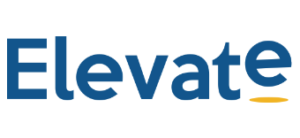Any business owner or HR professional knows that finding, attracting and retaining quality talent is one of the biggest challenges facing any business.
The hiring process can often last too long and cost too much. Even after you’ve found a candidate, there’s no guarantee that they’ll be suitable for the role. If you’re going to conquer recruitment challenges to find the right candidates at the right price, you’ll need to think outside the box.
You should certainly consider creating a robust alumni talent pool.
What is an alumni talent pool?
Before we dive into why you should develop an alumni talent pool, let’s quickly sketch a simple definition for the sake of clarity.
As the name suggests, an alumni talent pool is a database made up of former employees who worked for your business. This talent pool includes full-time employees, but you might also want to include independent contractors or part-time employees.
The talent pool is a useful HR resource – you can draw upon it to find potential candidates when you need them. But it can also do a lot more.
Why to create an alumni talent pool
An alumni talent pool is an excellent resource that you can draw upon to effectively manage the common pitfalls that come with recruitment.
Let’s take a closer look at the six key reasons you should develop an alumni talent pool.
1. Guarantee a cultural fit
According to Deloitte, 94% of executives believe that a distinct workplace culture is critical to business success. It’s little wonder: a strong company culture has the potential to elevate employee engagement, happiness, productivity and much more.
A company culture is a delicate thing, though, and you’ll have to work hard to find candidates that reflect and enhance that culture – a poor fit could negatively impact your business and harm your sense of culture.
If you draw on your alumni talent pool to find candidates for new roles, you can rest assured that you’ll find a good fit in terms of culture. You’ll already understand the profiles within your talent pool and this means you can remove the guesswork and danger that comes with hiring new profiles.
2. Boost your corporate training ROI
According to SH!FT, 7 out of 10 employees state that training and development opportunities heavily influence their decision to stay with a company. Quality corporate training can also help you to get the most from your employees.
Corporate training isn’t cheap, though, and you’ll need to make significant investments if you’re going to unlock its full potential. This is one of the reasons it can be so painful for businesses if an employee decides to leave.
If you lose an employee, your ROI on corporate training plummets. If you have the opportunity to re-hire that employee, though, you’ll protect your investment and unlock a higher ROI on your corporate training.
3. Strengthen your employment brand
If you’re going to attract the best talent out there, you’ll need to polish your employer brand. This means that you’ll need to craft a strong employee value proposition and build a vibrant company culture.
The return of a former employee is great for internal PR. This event is a testament to the quality of your business and it demonstrates that after having ventured out to find alternatives, your employees can’t find a better alternative.
If you find an appropriate candidate within your alumni talent pool, you’ll make a strong statement to your other team members and really create a sense of community.
Ready to delve deeper into this subject? Be sure to read our piece on how building a robust alumni talent network can strengthen your employment brand.
4. Understand the capabilities of your candidates
Even after the most rigorous and comprehensive interview process, there’s still an element of risk when you decide to hire a new employee. You’ll need to monitor how your new employee performs to assess their capabilities and whether they’re up to the task.
If you hire from within your alumni talent pool, though, you’ll have an excellent idea of what your candidate is capable of. You’ll be able to go through their previous performance reviews and determine whether or not they’re exactly what you’re looking for.
This helps to eliminate the element of risk that comes when hiring a new employee.
5. Reduce your recruitment costs
Finding the right talent can be incredibly expensive. In the UK, a typical recruitment agency will take around 15-20% of the final salary of the candidate, which is around £5,000 for an average salary. That figure ramps up considerably for more senior or technical roles.
An alumni talent pool can help you to reduce your recruitment costs significantly – if not eliminate them completely. That talent pool can give you direct access to experienced and pre-qualified candidates, so it’s an important resource.
6. Retain and re-attract Millennials
The modern workplace is evolving before our eyes, as well as the very concept of labour. Millennials now make up the majority of the workforce and they bring a unique and energetic approach to their work.
According to Glassdoor, though, a staggering 66% of Millennial employees are thinking of leaving their organisation in 2020. There’s a sense of dynamism among Millennial workers, and this means that you have to expect many of them to leave your business.
It’s an unfortunate reality, but a well-maintained alumni talent pool can help you prepare: if you carefully monitor the status of your Millennial alumni, you might be able to re-attract them to your business as they continue to change jobs at a regular pace.
Create your alumni talent pool today with Elevate
Are you ready to create your alumni talent pool and unlock the benefits we’ve gone through above? You might be interested in Elevate AI, a leading Talent Intelligence platform that makes it simple for you to create effective Private Talent Pools.
Learn more about how our platform can help you to retain, engage and attract the best talent for your organisation.

